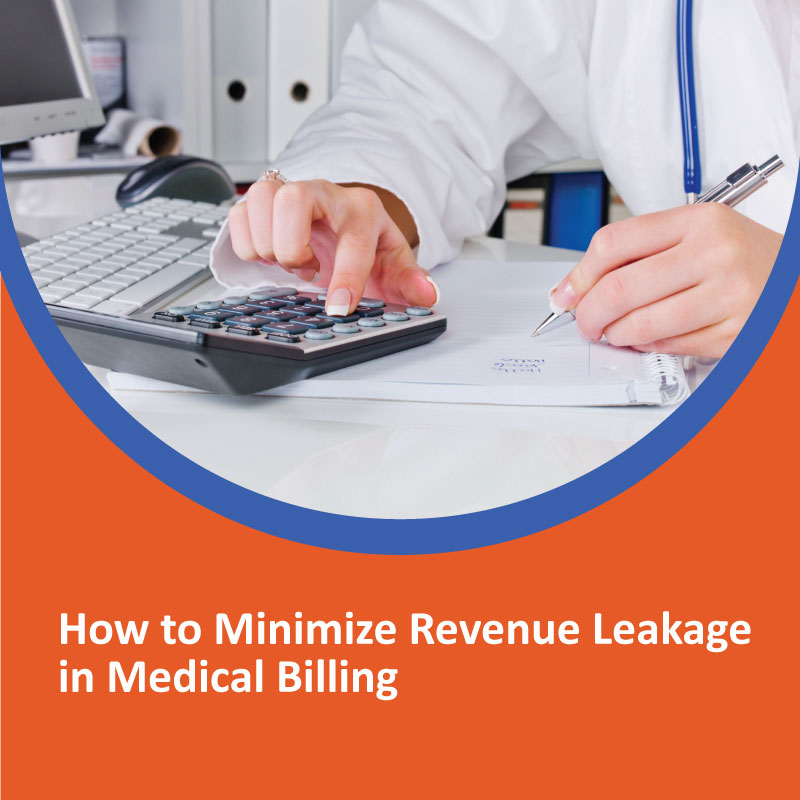Revenue leakage in medical billing refers to a situation when healthcare providers don’t get the payment for the services or care provided to the patients. Typically, this happens when outstanding bills for healthcare services remain unpaid for too long and unintentionally go unnoticed.
Unfortunately, an average healthcare facility succumbs 2 to 3% of its yearly revenue to preventable leaks. Although it doesn’t seem too significant, it can accumulate over time and make a big impact in the long run, occasionally reaching a total of billions of dollars for many hospitals in the US.
Therefore, the financial strain and headache that come with these revenue leaks demand that we discuss potential strategies to tackle the issue without too much hassle. So, without further ado. Let’s get into it.
How Does Revenue Leakage Affect Your Business?
Among the pillars, and probably the most important ones, that hold a business together is the profit it makes over the years. Therefore, revenue leakage by reducing profits becomes the greatest adversary to the exponential growth of healthcare facilities. Additionally, another major drawback is the negative impact it makes on overall reputation and patient loyalty. That’s why correcting these problems can help patients build trust and skyrocket growth.
5 Effective Ways to Reduce Revenue Leakage in Medical Billing
Preauthorization and Pre-certification
Let’s imagine that a patient receives a medical service, only for the insurer to later deny payment because the procedure wasn’t preauthorized or pre-certified. Whose fault is it, exactly? We are not playing the blame game, so let’s just leave it there and discuss what we can do to avoid that.
To avoid such pitfalls, you can make preauthorization and pre-certification a cornerstone of your billing protocol. By obtaining approval from payers before administering non-emergency services, you not only mitigate the risk of claim denials but also streamline the reimbursement process.
Correct Claim Details
Attention to detail is yet another way to make the difference between a streamlined medical billing and a denied claim. For this, you have to be proactive in verifying correct claim details such as patient demographics, service dates, and provider information before submission. It is important as even the smallest of discrepancies can result in insurance rejection, and what you get in return is revenue losses and administrative headaches.
Correct Diagnosis Codes
Insurance companies use ICD codes to classify disease processes and determine reimbursement (3). Therefore, mentioning correct diagnosis codes is crucial as they provide a common language for recording and reporting the diseases in the paperwork and can help avoid claim denials and downgraded reimbursements.
A simple yet effective way to ensure that is to stay abreast of the coding updates and guidelines. You can invest in coding software for this purpose. However, we recommend that you have your billing team cross-check the correctness of diagnosis codes to help minimize errors and optimize revenue capture.
Provider Credentialing
Insurance companies also demand that healthcare providers get credentialed before they start interacting with patients. It is the foundation that provides a resting space for the successful medical billing process.
You can ensure that your providers are certified with payers for seamless claims processing and reimbursement. You can also regularly review and update provider credentials to avoid disruptions in billing workflows and prevent revenue leakage due to credentialing lapses.
Revenue Cycle Management
Errors in the reimbursements and billing process can lead to delayed payments or even, in some cases, revenue leakage, which needs to be addressed immediately to avoid significant losses over time. That’s why a better solution to streamline the whole process would be outsourcing an expert team, such as MedICD, for your revenue cycle management. You will be surprised by the impact this minor investment will have on your financial uncertainties.
A Quick Recap
Revenue leakage in medical billing is a major pitfall in the healthcare industry. A practical approach to this issue is to identify its roots and start the process from there. Fortunately, it was identified several years ago, and since then, strategies have been implemented to address this issue.
Preauthorization of the billing protocol, entering correct claim details and correct diagnostic codes, ensuring provider credentials, and, finally, streamlining the RCM are the top five strategies to overcome the challenges that come with medical billing. If you want to streamline the whole process, a better technique would be to outsource a team of professionals, such as MedICD, to resolve the issue like an expert, with you focusing more on quality of care rather than the revenues.



